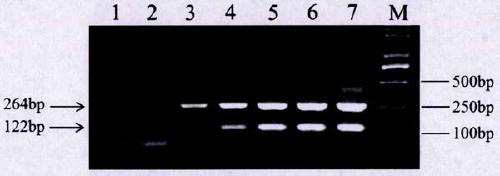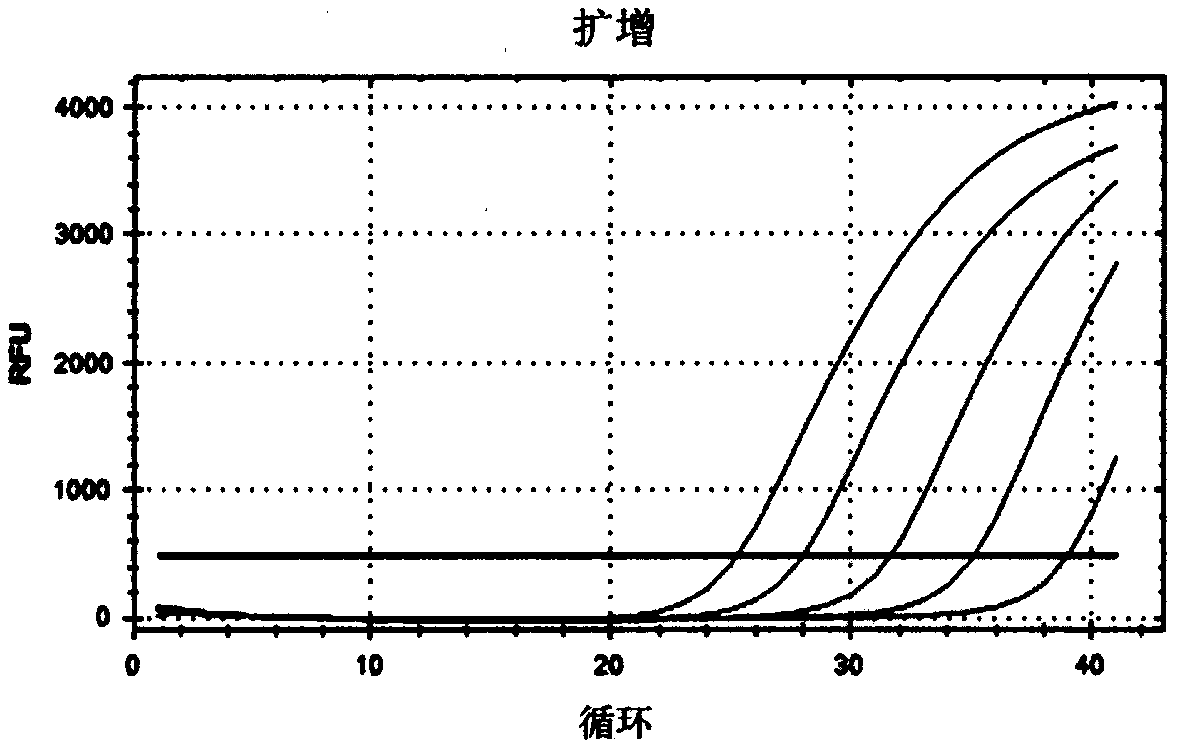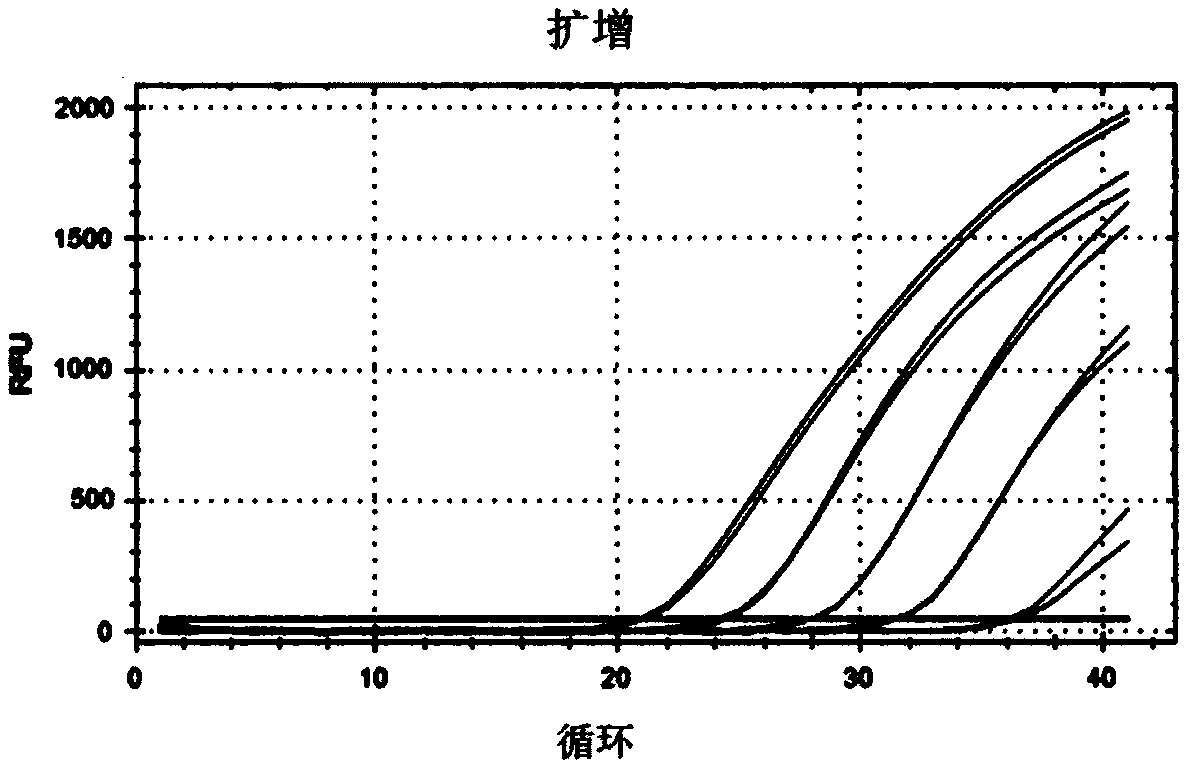A detection kit for accurately quantifying HIV DNA and its detection method
A technology for detection kits and detection methods, which can be used in microorganism-based methods, biochemical equipment and methods, and microbial determination/inspection, etc. Positive results, improved sensitivity, improved specificity
- Summary
- Abstract
- Description
- Claims
- Application Information
AI Technical Summary
Problems solved by technology
Method used
Image
Examples
Embodiment 1
[0034] Example 1 Establishment of nested PCR method
[0035] 1. DNA preparation
[0036] The standard product cell line-Jurket cell line according to 10 6 、10 5 、10 4 、10 3 、10 2 After doubling dilution, extract the DNA, and use 60 μl of the system to dissolve the DNA in the final step of collecting the DNA. The copy numbers of HIV DNA contained in 1 μl are 17000, 1700, 170, 17, and 1.7 respectively as standards;
[0037] 2. PCR amplification
[0038] 2.1 Primer design
[0039] In nested PCR, two sets of primers (A and B) were designed (as shown in Table 1), and each set consisted of two pairs of primers, outer (outer coat) and inner (inner set), in order to improve the sensitivity and specificity of the experiment. The concentration is 0.4 μmol / L.
[0040] Table 1 Nested PCR primer sequences
[0041]
[0042]
[0043] 2.2 Reaction system and reaction conditions
[0044] The reaction system was prepared according to Table 2. According to the reaction conditions...
Embodiment 2
[0053] Example 2 Establishment of real-time fluorescent quantitative PCR method
[0054] 1, DNA preparation Same as Example 1
[0055] 2. Primer and probe design
[0056] A total of five pairs of primers P1-P5 were designed, respectively corresponding to HIV DNA, CCR5 and three HIV subtypes AE, BC, and B (Table 5). Using the characteristics that each cell contains two copies of CCR5, the number of cells is quantified by amplifying CCR5, thereby calculating the number of cells per 10 6 The average amount of HIV DNA contained in a cell.
[0057] Table 5 Real-time fluorescent quantitative PCR primers and probe sequences
[0058]
[0059]
[0060] Remark:
[0061] ①P5 upstream primer is the same as P2 upstream primer
[0062] ② Probe 108 uses FAM fluorescence, probe 136 uses VIC fluorescence
[0063] ③P1 primers use 136 probes, and P2, P3, P4, and P5 primers all use 108 probes
[0064] ④The underlined part of the 136 probe is the hairpin structure.
[0065] 3. Perfor...
Embodiment 3
[0080] The establishment of embodiment 3 Digital-PCR method
[0081] Prepare the reaction system according to Table 9, add 25X stabilizer at the end, and use RainDance's mature RainStrom TM Skin droplet patented technology for oil droplet preparation. PCR amplification was carried out after the oil droplets were prepared, and the reaction conditions were shown in Table 7. After PCR amplification, the instrument was used to detect the fluorescence count. Digital PCR collects the fluorescent signal of each reaction unit after the amplification is completed. A fluorescent signal was recorded as 1, and no fluorescent signal was recorded as 0.
[0082] Since digital PCR calculates the copy number of the target sequence through endpoint detection, accurate absolute quantitative detection can be performed without using internal references and standard curves. In addition, since digital PCR uses endpoint detection, it does not depend on the Ct value, so digital PCR is greatly redu...
PUM
 Login to View More
Login to View More Abstract
Description
Claims
Application Information
 Login to View More
Login to View More - R&D
- Intellectual Property
- Life Sciences
- Materials
- Tech Scout
- Unparalleled Data Quality
- Higher Quality Content
- 60% Fewer Hallucinations
Browse by: Latest US Patents, China's latest patents, Technical Efficacy Thesaurus, Application Domain, Technology Topic, Popular Technical Reports.
© 2025 PatSnap. All rights reserved.Legal|Privacy policy|Modern Slavery Act Transparency Statement|Sitemap|About US| Contact US: help@patsnap.com



